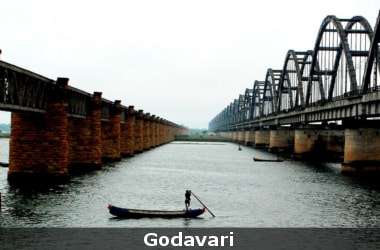
A group of US researchers is working on a system to map undulating pollution trends in the Godavari, India’s second longest river.
Using a mix of methods, including satellite-monitoring, traversing stretches of the river to collect water samples.
Using special sensors to measure bacterial and chemical pollution, the researchers are trying to develop a cost-effective forecast system.
The team’s long-term objective is to be able to inform State officials and citizens of a probable spike in, say, levels of dangerous microbes or effluents, similar to weather and air pollution forecasts.
The am is to be able to access “raw data” that could be used to inform the efficacy of a proposed faecal sludge treatment plant.
It will also indicate if behavioural interventions — including incentives or punishments — to restrict activities that pollute the river could actually work.
The project started eight months ago and has so far identified two “hotspots” of pollution,.
The exercise being done along a portion of the 1,400-km river spanning Rajamundhry (East Godavari district) and Kovvur, Narsapur and Palakol (all in West Godavari), measures parameters such as total dissolved salts, nitrate, pH, temperature, turbidity and electrical conductivity.
These are relayed to a website called Thoreau, a wireless sensing network maintained at the University of Chicago to map environmental parameters, for analysis.
Some river attributes such as microbial levels require to be measured in laboratories, though the team hopes eventually to be able to use low-cost sensors that measure them, too, in real time.
The exercise is part of a Bill and Melinda Gates Foundation project to support the programme of the Administrative Staff College of India (ASCI).
It aims to provide city-wide sanitation improvements in urban Andhra Pradesh.
Sensors to monitor river pollution are an emerging technological approach in India.
40 proposals to make the sensors (to monitor river and environmental pollution) had come in, and two would be short-listed soon.
Intel, which will make the chips powering the devices, and the DST will split a INR 35-crore investment.